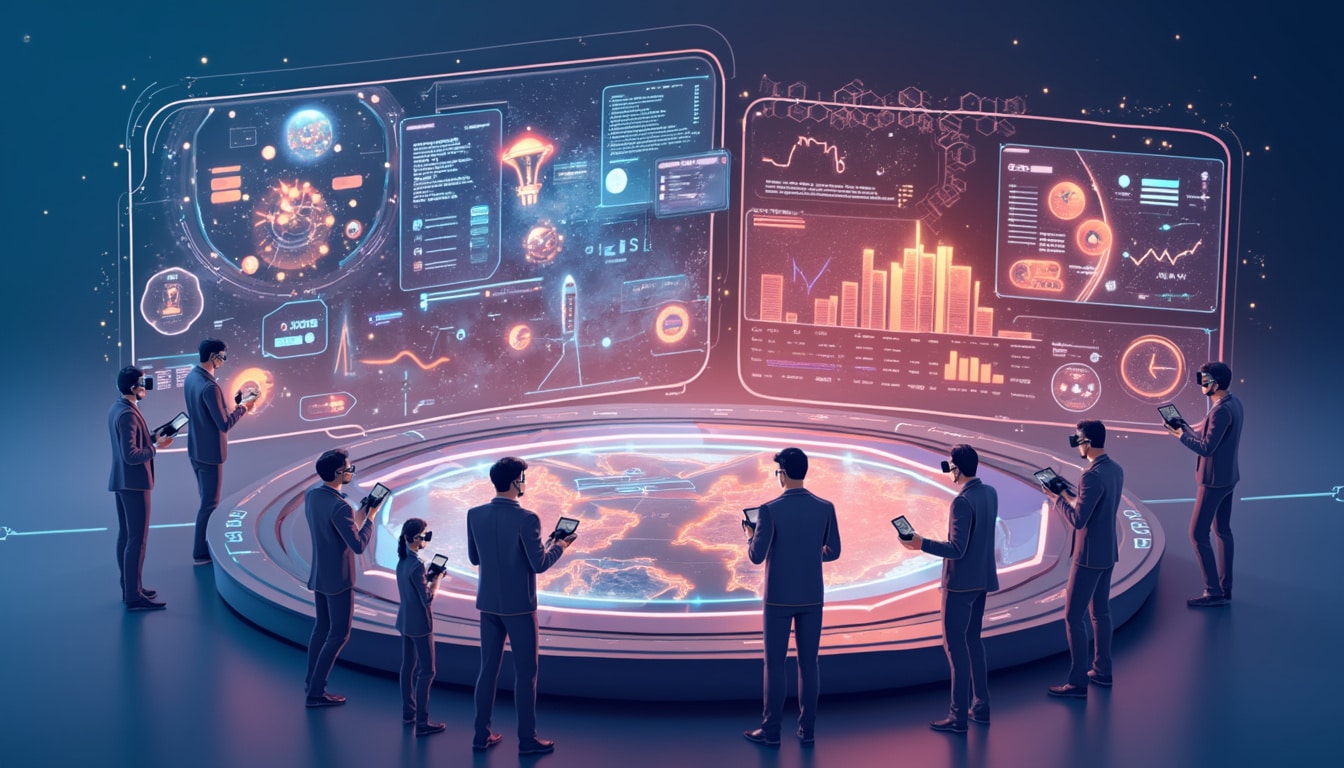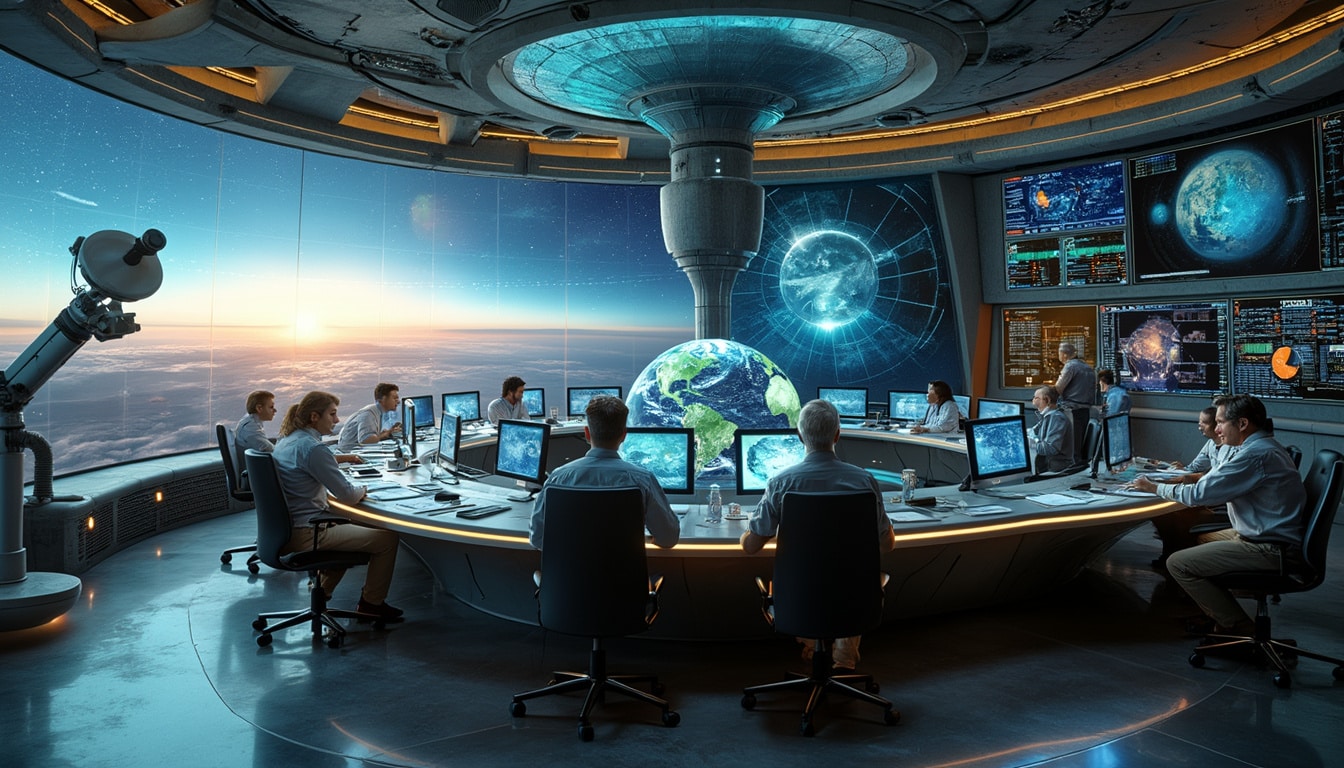The launch of NASA’s new METEOR system is a significant leap forward in the realm of employee tracking and data management. This groundbreaking initiative is designed to streamline workforce optimization and ensure compliance with agency policies while embodying the spirit of innovation in the technology sector. As we uncover the layers of this complex system, it becomes clear how such advancements are essential for navigating the future of work at NASA and beyond.
Through exploring the workings of METEOR, we unravel how this state-of-the-art technology enhances the agency’s capabilities in monitoring employee locations and ensuring a dedicated workforce. Additionally, we delve into its implications for space exploration, where precise workforce management is crucial for success in operational missions. The METEOR system demonstrates NASA’s commitment to leveraging advanced satellite systems and other innovations to further enhance its mission.
Unpacking the METEOR System
METEOR, an acronym standing for Monitoring Exceptions and Tracking Employee Onsite Reporting, represents NASA’s forward-thinking approach to managing employee attendance and compliance. This program’s deployment marks an essential turning point within the agency, as it responds to the ongoing changes in workplace engagement and accountability.

The Mechanics of METEOR
This sophisticated system is designed to track all full-time in-person employees and their onsite reporting status. With a focus on supporting industry standards, METEOR captures any exceptions to the stipulated onsite reporting requirements detailed in NASA’s Return to Full-Time In-Person Work plan, mandated by February 28, 2025. METEOR not only offers a solution to the employment landscape reshaped by the pandemic but also aims to enhance the agency’s operational efficiency.
One of the primary objectives of METEOR is to facilitate a balanced approach between remote and onsite work. By incorporating various digital tools and resources, NASA aims to foster a more agile workforce that can adapt to the dynamic demands of space missions. Employees can expect improved communication protocols and data-sharing processes, helping them adapt to their roles more seamlessly.
Impact on Employee Engagement
Engagement in the workplace plays a pivotal role in determining productivity levels. The METEOR system provides employees with a sense of accountability, encouraging them to participate actively in their roles. Furthermore, it enhances the transparency of performance tracking and ensures that every team member has the tools they need for optimized work delivery.
As organizations increasingly embrace hybrid work models, understanding and utilizing employee data management will become essential. METEOR stands as a model for other organizations to emulate, demonstrating how data-driven approaches can lead to more engaged and motivated employees. The potential positive effects of implementing such systems can be significant, especially in fields as critical as aerospace.
The Technological Backbone of METEOR
The inner workings of the METEOR system are built on sophisticated technologies that enable effective employee tracking. Central to this initiative are intelligent data management systems, advanced analytics, and satellite-based tracking tools.

Integration with Satellite Systems
NASA’s extensive experience with satellite systems facilitates the integration of METEOR into various operational environments. By utilizing real-time data, the system can effectively monitor employee locations and activities. This technology allows for accurate tracking of shifts and attendance, enabling administrators to respond swiftly to any issues that arise.
The design principles of METEOR reflect its commitment to safety and compliance. Leveraging data from existing satellite systems not only boosts employee accountability but also reinforces the focus on workplace safety. By ensuring that every employee’s location is accounted for, the organization can significantly reduce the risks associated with working in the aerospace field.
Data Management and Compliance
One of the foremost challenges associated with employee location tracking is managing employee data responsibly. METEOR addresses these concerns by implementing strict data management protocols that adhere to privacy regulations. This ensures that while compliance is achieved, employees’ rights and confidentiality are respected.
Moreover, the METEOR system is designed to enable seamless reporting capabilities. Managers can access real-time analytics and employee activity logs to stay informed about workforce compliance. The emphasis on transparency fosters a culture of trust within the organization, fueling a positive environment conducive to productivity and collaboration.
The Future of Employee Tracking at NASA
As METEOR unfolds across NASA’s various centers, its potential to redefine the workings of employee tracking systems becomes evident. This progressive approach sets the stage for the agency to evolve in response to changing workforce dynamics and operational needs.
Expanding Horizons: Future Developments
Looking ahead, NASA is poised to explore further advancements in technology and track employee performance more efficiently within its operational landscape. As METEOR continues to develop, the organization plans to increasingly incorporate machine learning algorithms and artificial intelligence into its framework, enhancing predictive capabilities regarding workforce performance.
These innovations aim to create an adaptive work environment that responds to current needs while preparing for future challenges. A more personalized and engaging employee experience will encourage professionals to contribute actively to the agency’s missions, understanding the importance of their roles in the wider scope of space exploration.
Partnerships Supporting METEOR’s Implementation
The implementation of the METEOR system is not solely a NASA endeavor. Collaborations with various technology partners are crucial in enriching the system’s capabilities. By leveraging expertise from established firms in the fields of analytics, data management, and software development, NASA can ensure that METEOR remains at the cutting edge of employee tracking innovation.
Continued investments in partnerships and technology foster an evolving ecosystem that supports enhanced tracking and management of employee activities. This collaboration will pave the way for new methodologies and operational efficiencies across NASA projects, contributing to a brighter future for the agency and its dedicated workforce.
Conclusion: Embracing the Future
NASA’s METEOR system symbolizes a commitment to embracing innovation in workforce management. As employee tracking technology evolves, this initiative stands as a beacon for others in the aerospace sector and beyond. The potential benefits of fostering transparency, accountability, and safety lie at the heart of the METEOR project.
This initiative reinforces the idea that the future of work is not only about technology but also about enhancing employee experience and engagement. As the organization adapts to a new era of workforce dynamics, METEOR will undoubtedly play a significant role in shaping the way NASA operates and accomplishes its ambitious goals.
| Feature | Description | Impact |
|---|---|---|
| Real-Time Tracking | Enables live monitoring of employee locations. | Enhances accountability and operational safety. |
| Data Management | Maintains strict protocols to manage employee data. | Ensures compliance with privacy regulations. |
| Analytics Integration | Provides insights into workforce performance. | Supports workforce optimization strategies. |
| Hybrid Work Support | Balances remote and onsite work effectively. | Promotes employee satisfaction and engagement. |
| Collaborative Efforts | Involves partnerships with tech firms for innovation. | Fosters an ecosystem of continuous improvement. |
As the METEOR system propels NASA into the future, it stands firmly at the intersection of technology, innovation, and aerospace endeavors, promising a brighter path for workforce management and, ultimately, for the grand exploration of space.




Leave a Reply